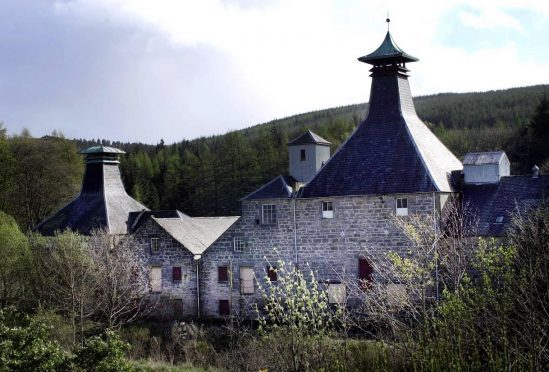The first steps towards transforming a historic distillery into a £14million hotel, spa and conference centre could be taken before the end of the year.
Proposals to bring the Coleburn Distillery back to life for tourists have repeatedly stalled since being first mooted nearly 13 years ago.
But now a whisky shop and cafe could be opened in an old workshop at the site, near Fogwatt south of Elgin, to “kick-start” the rest of the development.
Brothers Dale and Mark Winchester have submitted plans for the first phase of the ambitious project, which is thought to be the first of its kind in the world.
The owners want to use the original 19th century malt barn as the base for a 43-bedroom hotel, with woodland lodges and cottages boosting the total to 100 rooms.
Last night planning consultant Alan Farningham said a whisky shop and cafe would be an important first-step in the hotel vision.
He said: “What we’re looking to do is kick-start something on the site. There are still lots of barrels at the distillery and the aim is to have something related to whisky in the shop to get people on site.”
Previous attempts to start the project have faltered due to no operator for the hotel being found.
Mr Farningham added: “These things take a long time. There’s still strong interest and negotiations are currently ongoing with potential operators.
“We felt we needed to start getting something on the ground though to build up a bit of momentum.
“The cafe and retail area is very much part of the bigger proposal, which is for the whisky hotel, spa, conference facilities and holiday accommodation.”
The planning consultant added that if approval was granted for the first phase of the development then work could begin before the end of the year.
Also in the pipeline is an application to expand a warehouse at the distillery so more whisky can be held.
The developers intend to use the larger storage and cafe as a method to generate funding for the wider vision.
Concerns about a lack of parking spaces have been raised in previous attempts to revive the distillery as a hotel. Council planners have also requested wildlife surveys be done before major construction begins.
Yesterday the latest development described as “good news” by Laurie Piper, operations manager of Moray Speyside Tourism.
Mr Piper stressed that whisky was a “key driver” in attracting visitors to the region and new attractions helped encourage tourists from overseas.
He said: “There’s two aspects to whisky tourism, clearly the core product, which is the authentic taste of Speyside whisky is important.
“But it’s fair to say developments in the industry, such as the Distilled Festival and the new Macallan visitor centre, shows it continues to move and adapt for the modern visitor.”
Coleburn Distillery was founded in 1896 in woodland about six miles south of Elgin. The building draws its name from “charcoal burn” due to the area’s roots producing charcoal.
Transforming the former distillery into accommodation was first suggested by former owners United Distillers in the 1990s, who had earmarked the Victorian buildings for flats after it stopped making whisky in the 1980s.
However, the firm sold the site to the Winchester brothers in 2004 before their vision could be realised.
Coleburn’s production was predominantly used in blends, including Johnnie Walker Red Label.
